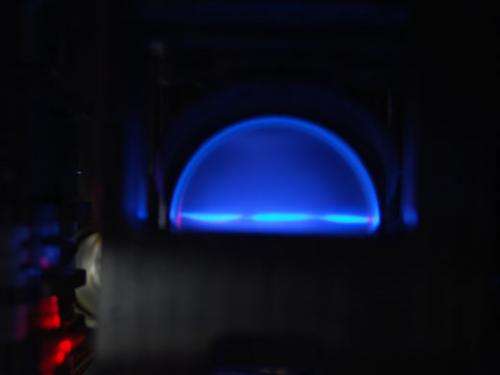Invisible tool enables new quantum experiments with atoms, molecules, clusters and other nanoparticles

Experiments on the quantum wave nature of atoms and molecules have enabled researchers to precisely measure tiny forces and displacements as well as to shed light onto the unexplored zone between the microscopic realm of quantum physics and our everyday world. Physicists around Philipp Haslinger and Markus Arndt at the University of Vienna have now succeeded in constructing a novel matter wave interferometer which enables new quantum studies with a broad class of particles, including atoms, molecules and nanoparticles. These lumps of matter are exposed to three pulsed laser light gratings which are invisible to the human eye, exist only for a billionth of a second and never simultaneously.
The new results are reported in the advanced online issue of Nature Physics.
Matter wave interferometry has a long standing tradition at the University of Vienna, where the first quantum interference of large molecules has already been observed in 1999. Nowadays scientists are hunting down evidence for the quantum mechanical behavior of increasingly complex constituents of matter. This is done in experiments in which the flying of each particle seems to obtain information about distinct places in space, which are inaccessible according to classical physics.
Synchronised laser flashes for quantum interferometry
The quantum nanophysics team around Markus Arndt of the University of Vienna has now established a novel way of manipulating massive particles: the researchers use nanosecond long flashes of laser light to create gratings, three of which form a closed-path interferometer. This scheme allows creating quantum mechanical superposition states, which we do not observe in our macroscopic environment. When precisely synchronized, the fleeting light structures form a device freed from many constraints that limited the measurement precision in earlier machines. "Interferometry in the time-domain with pulsed light gratings will become a central element of quantum experiments with nanoparticles" states Philipp Haslinger who is the first author of the paper.
Viennese prototype with powerful universality
Five students from the University of Vienna have been planning and setting up the device over the past years. The developed prototype is one of a kind: for the first time it allows to investigate the quantum wave nature not only of single molecules, but also of clusters of molecules. During an experiment these particles line up for few nanoseconds in a periodic nanopattern. This structure may serve as a "nanoruler" which enables the detection of tiny external perturbations as well as the precise measurement of small forces and fields.
More information:
Haslinger, P. et al. A universal matter interferometer with optical ionization gratings in the time-domain in Nature Physics (2013).
DOI: 10.1038/NPHYS2542
For further information see: www.quantumnano.at/otima.3903.html
Journal information: Nature Physics
Provided by University of Vienna



















